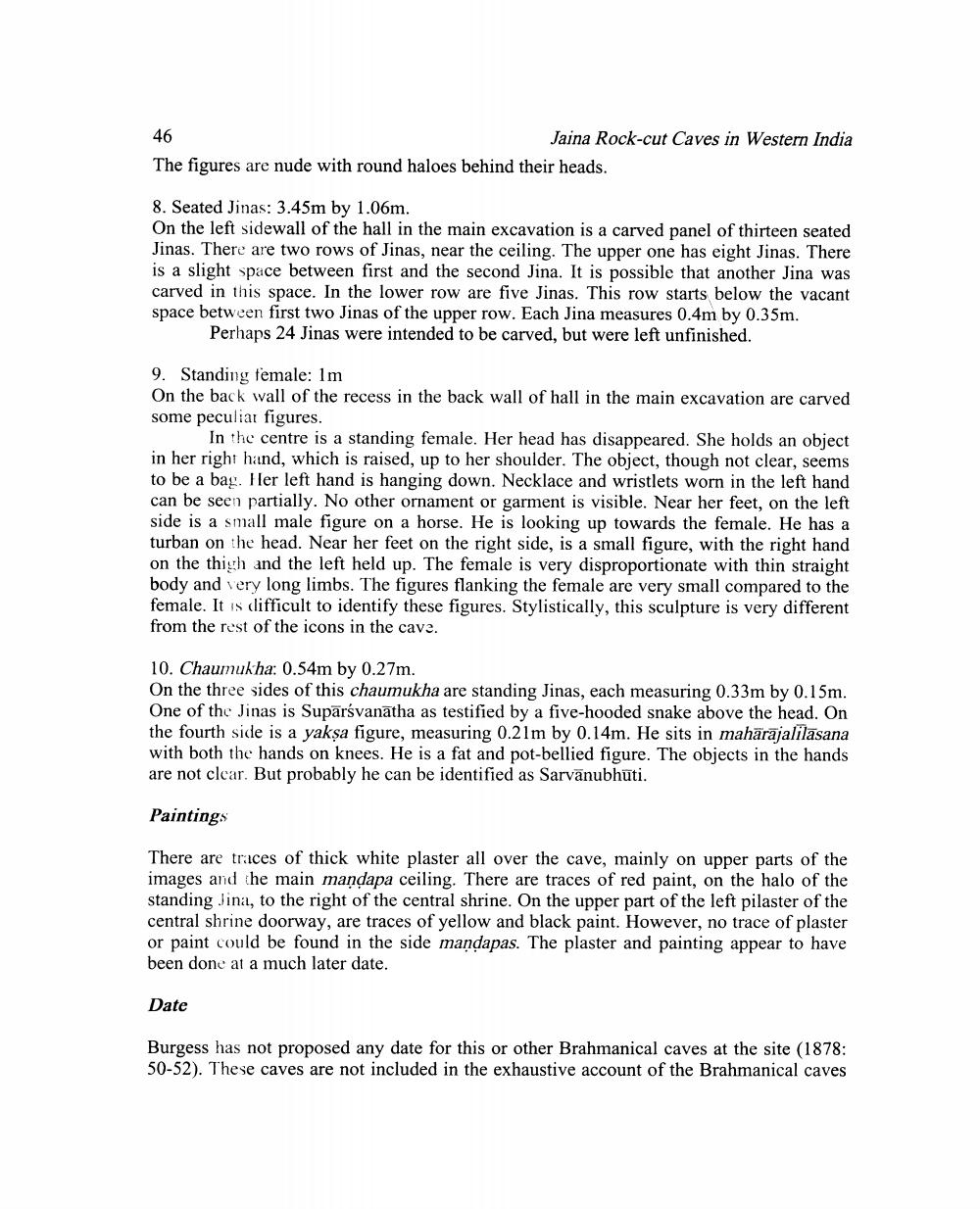________________
46
Jaina Rock-cut Caves in Western India The figures are nude with round haloes behind their heads.
8. Seated Jinas: 3.45m by 1.06m. On the left sidewall of the hall in the main excavation is a carved panel of thirteen seated Jinas. There are two rows of Jinas, near the ceiling. The upper one has eight Jinas. There is a slight space between first and the second Jina. It is possible that another Jina was carved in this space. In the lower row are five Jinas. This row starts below the vacant space between first two Jinas of the upper row. Each Jina measures 0.4m by 0.35m.
Perhaps 24 Jinas were intended to be carved, but were left unfinished.
9. Standing temale: Im On the back wall of the recess in the back wall of hall in the main excavation are carved some peculiar figures.
In the centre is a standing female. Her head has disappeared. She holds an object in her right hand, which is raised, up to her shoulder. The object, though not clear, seems to be a bag. Her left hand is hanging down. Necklace and wristlets worn in the left hand can be seen partially. No other ornament or garment is visible. Near her feet, on the left side is a small male figure on a horse. He is looking up towards the female. He has a turban on the head. Near her feet on the right side, is a small figure, with the right hand on the thigh and the left held up. The female is very disproportionate with thin straight body and very long limbs. The figures flanking the female are very small compared to the female. It is difficult to identify these figures. Stylistically, this sculpture is very different from the rest of the icons in the cave.
10. Chaumukha: 0.54m by 0.27m. On the three sides of this chaumukha are standing Jinas, each measuring 0.33m by 0.15m. One of the Jinas is Suparsvanātha as testified by a five-hooded snake above the head. On the fourth side is a yakṣa figure, measuring 0.21m by 0.14m. He sits in mahārajalilasana with both the hands on knees. He is a fat and pot-bellied figure. The objects in the hands are not clear. But probably he can be identified as Sarvānubhuti.
Paintings
There are traces of thick white plaster all over the cave, mainly on upper parts of the images and the main mandapa ceiling. There are traces of red paint, on the halo of the standing Jina, to the right of the central shrine. On the upper part of the left pilaster of the central shrine doorway, are traces of yellow and black paint. However, no trace of plaster or paint could be found in the side mandapas. The plaster and painting appear to have been done at a much later date.
Date
Burgess has not proposed any date for this or other Brahmanical caves at the site (1878: 50-52). These caves are not included in the exhaustive account of the Brahmanical caves




